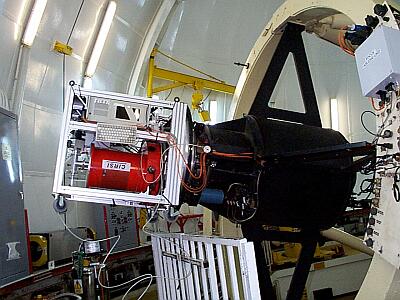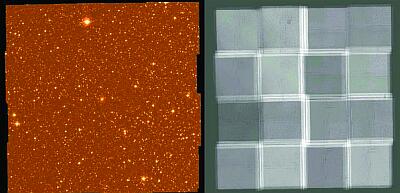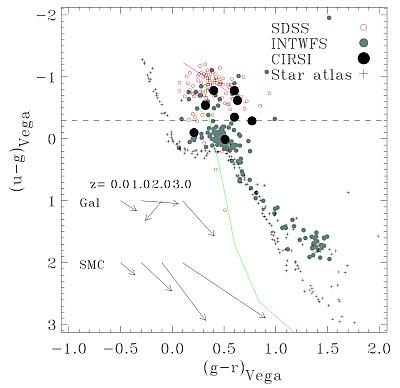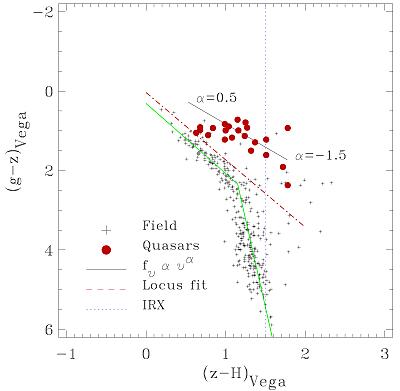Figure 3. A comparison is shown of a sample of
previously known quasars identified in the SDSS. The new quasars identified
by gzH selection for which ugr data is available from the INT WAS are marked
with filled circles. The horizontal line at u–g= –0.3 represents a UVX selection
boundary analogous to that used in the 2dF quasar survey (2QZ Boyle
et al., 2000). The stellar locus, computed from a spectral atlas, is
shown along with stellar objects from a field of the INT WAS. The locus of
quasar colour as a function of redshift is indicated by the solid line. The
onset of absorption in the g band, due to the Lyman-a forest, is evident
for quasars with z>3. Reddening vectors for dust models based on the Galaxy
and the Small Magellanic Cloud are shown over a range of redshifts. The 2175Å
feature in the galactic law passes through the g band over the range 1<z<2.
[ JPEG | TIFF ]
|






